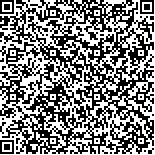| 引用本文: | 朱宝杰,赵静,李绍平.基于比折光指数增量值(dn/dc)的多糖HPSEC-RID定量分析[J].中国现代应用药学,2023,40(7):934-937. |
| ZHU Baojie,ZHAO Jing,LI Shaoping.Quantitative Analysis of Polysaccharides Using HPSEC-RID Based on Refractive Index Increment(dn/dc)[J].Chin J Mod Appl Pharm(中国现代应用药学),2023,40(7):934-937. |
|
| 本文已被:浏览 1745次 下载 1731次 |

码上扫一扫! |
|
|
| 基于比折光指数增量值(dn/dc)的多糖HPSEC-RID定量分析 |
|
朱宝杰1,2,3, 赵静1,2,3, 李绍平1,2,3
|
|
1.澳门大学中华医药研究院, 中药质量研究国家重点实验室, 中国 澳门 999078;2.中药糖工程与检测技术联合实验室(澳门大学-国家糖工程技术研究中心联合实验室), 中国 澳门 999078;3.澳门中药检测中心, 中国 澳门 999078
|
|
| 摘要: |
| 目的 建立基于比折光指数增量值(dn/dc)的多糖高效分子排阻色谱法-示差折光检测法(high performance size exclusion chromatography-refractive index detector,HPSEC-RID)通用定量分析方法。方法 基于浓度敏感型检测器对样品响应的峰面积与浓度呈线性相关,根据已知dn/dc值的分析物如氯化钠(0.174 mL·g-1)水溶液峰面积与浓度线性关系,计算仪器校准常数(KRI),进而根据多糖通用dn/dc值实现不需要对照品以及多角度光散射(multi-angle laser light scattering,MALLS)检测器和第三方软件的多糖含量测定;并以枸杞多糖为例,比较所建立方法与应用第三方软件方法所得结果一致性。结果 基于氯化钠水溶液dn/dc值,离线和在线2种模式下测得仪器KRI均为0.998;基于通用dn/dc值结合HPSEC-RID测定的不同批次枸杞子中枸杞多糖测定结果与HPSEC-MALLS-RID测定结果一致,RAD为0.45%~1.23%。结论 基于dn/dc值结合HPSEC-RID即可实现天然多糖的简单、快速、准确的定量分析,无需对照品以及MALLS检测器和第三方软件。 |
| 关键词: 多糖 比折光指数增量值(dn/dc) 高效分子排阻色谱法(HPSEC) 示差折光检测法(RID) 仪器校准常数(KRI) 枸杞多糖 |
| DOI:10.13748/j.cnki.issn1007-7693.20220521 |
| 分类号:R917.101 |
| 基金项目:澳门科学技术发展基金项目(034/2017/A1,0017/2019/AKP);广东省重点领域研发计划(2020B111111006) |
|
| Quantitative Analysis of Polysaccharides Using HPSEC-RID Based on Refractive Index Increment(dn/dc) |
|
ZHU Baojie1,2,3, ZHAO Jing1,2,3, LI Shaoping1,2,3
|
|
1.State Key Laboratory of Quality Research in Chinese Medicine, Institute of Chinese Medical Sciences, University of Macao, Macao 999078, China;2.Joint Laboratory of Chinese Herbal Glycoengineering and Testing Technology(Joint Laboratory of National Glycoengineering Research Center), Macao 999078, China;3.Macao Center for Testing of Chinese Medicine, Macao 999078, China
|
| Abstract: |
| OBJECTIVE To establish a general method for quantitative analysis of polysaccharides using high performance size exclusion chromatography-refractive index detector(HPSEC-RID) based on refractive index increment dn/dc value. METHODS Based on the principle of concentration sensitive detector, the peak area of the sample component was linearly related to the concentration. The linear relationship between the peak area and concentration of aqueous sodium chloride solution, which had known dn/dc value(0.174 mL·g-1), was used to calculate the calibration constant(KRI). Furthermore, the quantitative analysis of polysaccharides was achieved independently without reference compounds multi-angle laser light scattering(MALLS) detector and third-party software. In this study, Lycium bararum polysaccharides were took as an example to compare the determination results obtained from the established method and method applied with third-party software individually. RESULTS The KRI value was obtained with 0.998 in both offline and online modes based on aqueous sodium chloride solution with known dn/dc value. The determination results of Lycium barbarum polysaccharides in different batches of Lycium barbarum fruits using HPSEC-RID based on universal dn/dc value were consistent with the determination results by HPSEC-MALLS-RID, and RAD was ranged from 0.45%-1.23%. CONCLUSION The HPSEC-RID based on dn/dc value can realize the simple, rapid and accurate quantitative analysis of polysaccharides without reference compound, and not relying on MALLS detector and third-party software. |
| Key words: polysaccharides refractive index increment(dn/dc) high performance size exclusion chromatography(HPSEC) refractive index detector(RID) calibration constant(KRI) Lycium barbarum polysaccharides |
